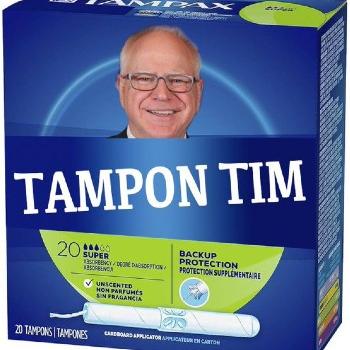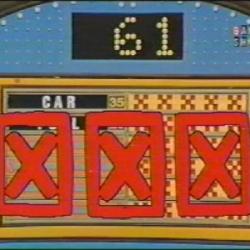Arthur S. Brisbane, public editor for The New York Times, asks “Should the Times Be a Truth Vigilante?“:
I’m looking for reader input on whether and when New York Times news reporters should challenge “facts” that are asserted by newsmakers they write about.
OK, Brisbane seems unclear on both sides of “All the news” and “fit to print,” so let’s review.
“If your mother says she loves you, check it out.”
That’s the job. That’s it. That is what being a reporter and a journalist means.
If your mother tells you she loves you and you turn around and repeat, “My mother loves me,” or even the slightly more careful, “My mother says she loves me,” then you’re not a reporter or a journalist. You’re not reporting, just repeating. That’s stenography or gossip, not journalism.
Checking it out is what makes a reporter and what makes a report.
Let’s step back to an even more basic level. Brisbane is so at sea in even Journalism 101 that perhaps we need to review some material from the Remedial Journalism 090.
For a story to be a story, it must answer W, W, W, W, W and H.
If you don’t answer those questions — accurately — then you haven’t reported the story.
“My opponent has the worst attendance record of anyone in the legislature,” the state senator said Thursday at a campaign stop on Main Street.
That won’t do. It doesn’t answer the basic question of “what?” To know what happened on Thursday on Main Street, the reporter must check it out. The reporter — this is the job, the very definition of the job — must check to determine whether or not the opponent does, in fact, have “the worst attendance record of anyone in the legislature.”
Without determining whether or not that claim is true it is impossible to tell this story because without determining whether or not that claim is true it is impossible to know what the story is.
If the claim is true, then the answer to “what?” is that the candidate criticized her opponent’s poor attendance record. That’s news. If the claim is false, then the answer to “what?” is something else — either the story is that the candidate has committed an embarrassing gaffe by getting her facts wrong, or the story is that the candidate is attempting to mislead the public. Either way, that’s big news.
In any case, it’s impossible to write the story — to write the headline, the lede, the nut graf — until the reporter checks it out and determines whether or not the candidate’s claim is, in fact, true.
If the reporter can’t be bothered to check out the claim then the editors shouldn’t bother to print the report because it’s not a report. If the reporter doesn’t check out the claim, then the reporter cannot tell us what happened. And if a reporter cannot be bothered to tell us the answer to “what?” then we have no reason to trust what they say about who, where, when, why or how.
Arthur Brisbane’s column is an admission of journalistic malpractice. He should be told to step away from his desk and go home before he does any more damage. The New York Times ought to be furious for what he has done to its once-respected name.
And his name should become a shorthand epithet for all who are clueless about the most basic purpose of their jobs. The next time a cornerback totally flubs the coverage to allow an easy touchdown, the announcer should say, “Boy, he really pulled a Brisbane on that play. He looked like he had no idea why he was even on the field …”
Below the jump are links to some of my previous posts on this very same subject, plus a roundup of a small slice of the much-deserved shock, horror and blistering ridicule of the Times‘ epic Brisbane.
Jay Rosen: “So whaddya think: should we put truthtelling back up there at number one?“
Something happened in our press over the last 40 years or so that never got acknowledged and to this day would be denied by a majority of newsroom professionals. Somewhere along the way, truthtelling was surpassed by other priorities the mainstream press felt a stronger duty to. These include such things as “maintaining objectivity,” “not imposing a judgment,” “refusing to take sides” and sticking to what I have called the View from Nowhere.
No one knows exactly how it happened, for it’s not like a policy decision came down at some point. Rather, the drift of professional practice over time was to bracket or suspend sharp questions of truth and falsehood in order to avoid charges of bias, or excessive editorializing. Journalists felt better, safer, on firmer professional ground–more like pros–when they stopped short of reporting substantially untrue statements as false. One way to describe it (and I believe this is the correct way) is that truthtelling moved down the list of newsroom priorities. Other things now ranked ahead of it.
But wait a minute: how can telling the truth ever take a back seat in the serious business of reporting the news? That’s like saying medical doctors no longer put “saving lives” or “the health of the patient” ahead of securing payment from insurance companies. It puts the lie to the entire contraption. It devastates journalism as a public service and honorable profession.
And so officially, this event (“truthtelling moved down the list of newsroom priorities”) never occurred, even though in reality it did. Because no one was ready for that devastation. Therefore no reckoning (wait: how could this happen?) ever took place. Denial was successfully maintained, even as criticism built and journalists inside the fraternity announced what was happening. …
Charlie Pierce: “The End of Truth“
Newspapers today are run by terrified beancounters. The industry is dying. They know it. They are casting about for any strategy to delay the inevitable and, personally, they are casting about for any parachute they can find. The beancounters owe their primary allegiance to “the company,” and not to the reporter in the field. The beancounter editors and sub-editors at many — if not most — major newspapers and broadcast outlets would sell their grandmothers to the Somali pirates for a bigger office and two steps further up the masthead, which will get them closer to where the parachutes are kept. Most newspapers — most especially, the New York Times — have forced upon their reporters what are called “ethics codes,” but which, in reality, are speech codes written to prevent the beancounters and careerists from having to answer angry phone calls from wingnuts.
Will Bunch: “The American media still can’t handle a lie“
When journalists find its easier to repeat provable lies rather than challenge them, it’s time to ask ourselves why we even bothered to become journalists.
John Aravosis: “NYT public editor unsure if paper should publish lies unquestioned“
You can’t just repeat the lies and be done with it. At the very least you quote someone countering the lie, but even then the damage is done (I say you’re a pedophile, you say “no I’m not” — the paper prints both and now people wonder). Often what reporters do is, rather than quote an authority pointing out the lie, they quote a partisan — which makes it look more like a he-said-she-said than an irrefutable rebuttal. What reporters should do depends upon the nature of the allegation (if it’s a known lie then get an expert to refute it, if it truly is an opinion, then get an opinion from the other side).
Greg Sargent: “What are newspapers for?“
Brisbane suggests it’s an open question whether reporters who are amplifying assertions made by candidates should tell readers whether those assertations are true or not. …
I think there’s a simple way to drive home to Brisbane why reporters should include info enabling readers to judge such claims.
The Times itself has amplified the assertion — made by Romney and Rick Perry — that Obama has apologized for America, without any rebuttal, at least three times: Here, here, and here. I urge Brisbane to check them out. If he does, he’ll see that any Times customer reading them comes away misled. He or she is left with the mistaken impression that Obama may have, in fact, apologized for America, when he never did any such thing.
In other words, in all those three cases, the Times helped the GOP candidate mislead its own readers — with an assertion that has become absolutely central to the Republican case against Obama. Whatever the practical difficulties of changing this, surely we can all agree that this is not a role newspapers should be playing, particularly at a time when voters are choosing their next president.
Juli Weiner: “Should Vanity Fair Be a Spelling Vigilante?“
Just as New York Times public editor Arthur S. Brisbane is concerned whether his newspaper is printing lies or the truth, we here at V.F. looking for reader input on whether and when Vanity Fair should spell “words” correctly in the stories we publish.
One example: the word “maintenance” seems like it should only have one “a” in it. It should be “maintenence,” right? But it’s not. So is it our job as reporters and editors to spell it correctly?
Another example: who decides “Michele Bachmann” should be spelled with one “l” in “Michele” and two “n”s in “Bachmann”? I’ve never seen it spelled like that in any other circumstance, so should we print it just because that’s how she spells it? I don’t know.
See also:
- Poynter: “Journalists incredulous as Times public editor asks: ‘Should the Times be a Truth Vigilante?’“
- Choire Sicha: “‘Times’ Poll: Should or Should We Not Print Lies?“
- James Fallows: “False Equivalence: the Ur-Document“












